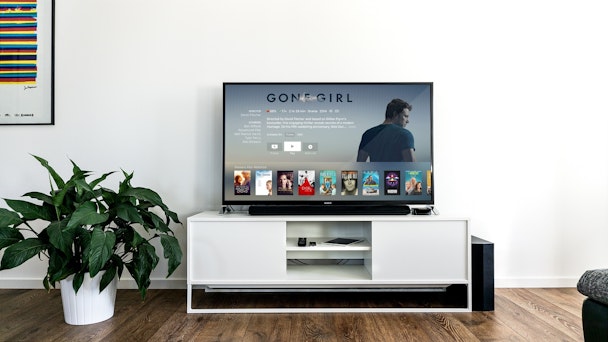Connected TV: time to reimagine ad breaks and new creative formats
Connected TV (CTV) is thriving. In the US, digital video ad spend is estimated to reach $58.39bn by 2023, a report by eMarketer suggests. CTV allows for more cross-platform data and better targeting opportunities, resulting in higher conversion for marketers.

Connected TV: time to reimagine ad breaks and new creative formats / Image by Jens Kreuter on Unsplash.
Ahead of the company’s participation at The Drum's Programmatic Punch US, Telaria’s chief executive officer Mark Zagorski discusses the future of connected TV with The Drum.
It has been an interesting time in the CTV space since its inception. How will 2019 and beyond push the opportunities even further for brands to effectively target consumers across TV?
CTV is integral to today’s media strategy because it encompasses the best of both digital video and TV – precision targeting in a premium video environment. CTV is now in roughly 70% of all US households and it’s poised to overtake traditional linear TV to become the first screen advertisers choose when they want to reach engaged audiences.
Advertising on CTV is everything marketers have been looking for when it comes to video: big screen, viewable, non-skippable, addressable and brand-safe. Brands that are frustrated with the old school ways of linear and exasperated at YouTube’s brand safety issues will gravitate towards CTV. In 2019 we’re going to see brands thinking quite literally out of the box to see how CTV can deliver a more superior user experience that drives higher engagement.
Is scale coming to connected TV?
The millions of viewers tuning into services like Hulu, Sling, and PlutoTV are proof that there is already sufficient scale in CTV. The breadth of CTV inventory available to advertisers will grow as consumers continue cord cutting en masse. In response to consumer demand, publishers and streaming companies are investing billions into developing new content specifically for CTV. On top of all the video-on-demand content, audiences are increasingly watching live TV such as sports and major events like the royal wedding on their CTV devices.
Publishers need a way to sustainably finance all this content and, with consumers already feeling subscription fatigue, by necessity, many of these platforms are going to have to offer an ad-supported option. All of this means there will be a very welcome increase in CTV supply to satisfy advertiser demand.
With a notable increase in the volume of CTV inventory and investment in related technology, it has the potential to finally go mainstream in 2019. However, is there a commitment from across the industry to create a common currency to evaluate and measure CTV?
Hurdles around CTV measurement exist, but it’s mainly because the industry hasn’t yet coalesced around a universal set of metrics. It doesn’t mean CTV ads aren’t effective. Telaria is working with the IAB Tech Lab on the guidelines around Identifiers for Advertising (IFA) on OTT platforms, which is a framework for the OTT video ecosystem to communicate in the same language in an ad request. Given the speed with which audiences are moving to CTV, it’s simply not an option to ignore this channel.
For brands looking to get started with their connected TV strategy, what would your advice be?
When advertisers think about advertising on TV, their first thought is often which specific channels and shows they want their ads to run alongside. With CTV however, buyers don’t buy based on shows, they can precisely reach their desired viewers based on audience targeting.
If an advertiser wants to reach millennial video game enthusiasts, advertising on CTV can efficiently reach this intended audience across all the CTV video they’re watching. Brands should be empowered to look beyond the first three CTV publishers that come to mind to fully explore what their budgets can achieve. A simple way for brands getting started with their first CTV campaigns is to curate multi-publisher private marketplace (PMP) packages to reach the specific audiences they want with sufficient scale.
What does the future hold for connected TV?
The future of CTV is incredibly bright as evidenced by the fact that every major media company from Disney to Discovery, has announced a plan to launch their own CTV service. The flood of ad-supported premium video content is reaching record highs - by our estimate, $33bn was invested in new streaming TV content in the past two years.
Along with the explosion of content, the potential for creative advertising has never been greater, and forward-thinking brands should take advantage of this evolution. There’s huge potential for the industry to re-imagine ad breaks, ad pods and new creative formats that will shape the way we all view digital video for years to come.
Telaria chief commercial officer Adam Lowy will appear on the 'Where are TV budgets going to be placed?' panel at Programmatic Punch, a full day event serving insight and practical advice on the latest developments in programmatic trading. Tickets can be purchased for the event at Ogilvy and Mather, New York on June 6.


